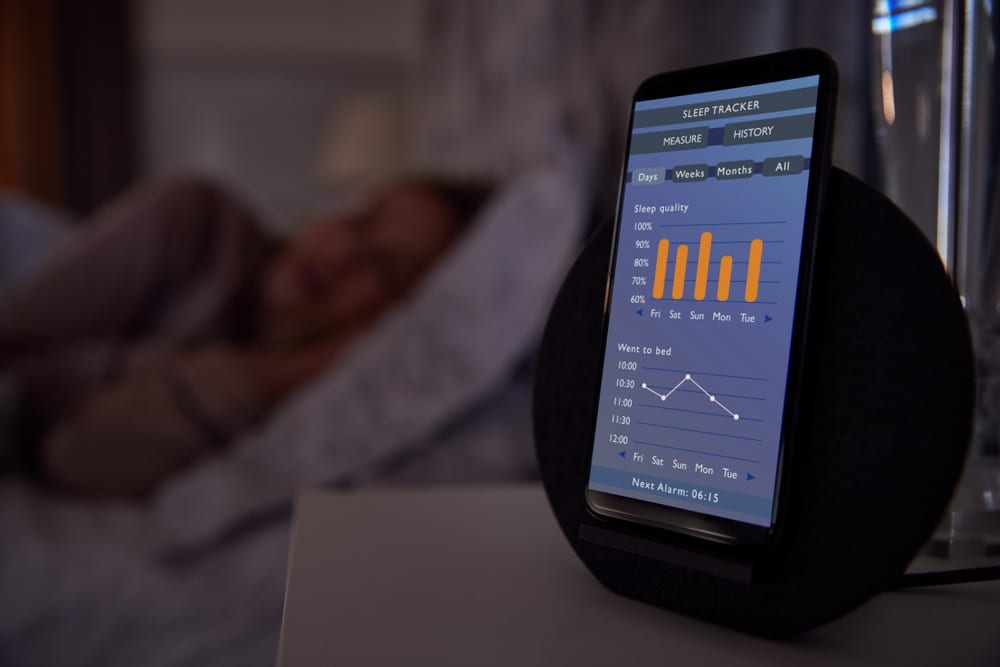Now there’s an app for everything: listening to music, online banking, contactless payments, reading the news, praying, apps used to limit your screentime, to exercise, count calories, measure sleep quality, get therapy or monitor your sugar intake.
Known as wellness apps, they promise to improve users’ physical and mental health. The wellness app sector was valued at $2.7 billion in 2022, with a projected annual growth of 17.7%. By number of downloads, the most popular wellness apps are related to improving users’ sleep, followed by those that promise to “help” users meditate or lose weight.
However, their popularity has not staved off criticism. Warnings from former users and recent studies indicate that, despite good intentions, the lack of human interaction and the “automation of care” can actually cause the opposite effect of what’s desired. Some experts also have concerns about the potential privacy implications of giving these apps such detailed access to our physical and mental health data.
The sleep competition

For many people, tracking their sleep quality has become an obsession. They do so using their cell phones or via devices like the Apple Watch or Fitbit, which they have with them at all times. The way it works is always the same: an app collects as much data as possible about the user’s sleeping patterns. Then, some give you a simple summary of the data; others also include “personalized” recommendations.
One 2017 study conducted by Rush Medical College and the Northwestern School of Medicine already warned of the dangers these technologies could have for rest. Just when the sleep monitoring apps were beginning to become popular, the study pointed out that the data collected via the apps might actually be inaccurate and they could even cause excessive concern about sleep quality, or “orthosomnia,” which ends up causing it to actually worsen.
Some people take this obsession to an extreme. In statements to the Wall Street Journal, Mike Skerrett, 27, admitted to having sealed his mouth shut with duct tape to improve his stats on Whoop, the bracelet app he uses every night, and consults first thing in the morning.
In an attempt to gain more user loyalty, some applications have chosen to turn that competitiveness users feel into entertainment. In Pokémon Sleep, “players” have to leave their cell phone near the pillow so that it collects sleep data. The next day, they can catch one creature or another depending on the “score” they achieved.
Getting used to seeing the different metrics picked up by devices and apps leads many to distrust their own feelings of whether or not they feel rested first thing in the morning. If what they see on the screen indicates that their sleep quality has worsened compared to the day before, users often start to worry, which oftentimes leads to stress or anxiety.
The need for control
Something similar occurs when it comes to fitness applications. Those who use them receive small bursts of dopamine (the “satisfaction hormone”) every time they see they’ve met one of their goals for the day. However, as health coach Saara Haarpen points out, when users don’t meet their goals, the apps’ constant reminder of these failures can easily lead to anxiety and obsession, causing a “fight or flight” reaction.
Obsessions with health and fitness data, mixed with the need to meet goals, can exacerbate eating or behavioral disorders
What if you only got in 8,000 steps instead of the aimed-for 10,000? There are those who, to rectify the number, push themselves to the limit, and reorganize their lives in ways that can affect other areas of it: they take the long way to work, even if they arrive half an hour late, or they refuse to sleep before their objective on the app has been achieved. Others stop valuing physical exercise, or even give it up, as it’s impossible to measure on a calorie counter app.
It seems like people who fall into these sorts of behaviors no longer trust their own instincts of whether or not they “feel good,” they’ve stopped resting content knowing they’ve done a good workout when they do. Until statistics from trackers or apps confirm their reality, victory cannot be sung. Just like what happens with sleep app stats, there’s a risk of incongruity between what you are supposed to feel (what the apps say) and what you really feel.
Furthermore, oftentimes, with this fixation on data, the ability to enjoy exercising for the sake of exercising, or sleeping for the sake of sleeping, or eating for the sake of eating is lost, because, very much in accordance with the times in which we live, everything has to be directed towards a goal or an objective that, of course, must be quantifiable.
Hiding behind data
You don’t have to be very intuitive to understand how this obsession with data, mixed with the need to meet goals, can exacerbate possible eating or behavioral disorders in some people. According to the National Federation of Professional Trainers (NFTP), 65% of patients with anorexia nervosa admit to using apps that help count calories, which also leads them to exercise compulsively (a disorder known as “technorexia”).
Despite their risks, so-called “wellness apps” can help many people achieve healthier habits
Zoe, an app that was developed to measure and track Covid symptoms, has now become a “hyper-personalized” nutrition program. It is based on users’ blood sugar levels and their gut microbiome, which it constantly tracks through medical devices that the company sends users. So far, there is no proven scientific basis to support the program’s scientific foundations, or that sugar level monitors help people without diabetes stay healthy, Unherd notes. This has not prevented more than 100,000 people in England, where the application has been most popular, from paying 300 pounds a year for the application to process their data. There, doctors have documented more patients coming in with unnecessary health concerns based on the slightest changes in their Zoe results.
Noom, MyFitnessPal and Lose it! They are among other wellness applications that present themselves as allies for “conscious eating,” supposedly opposed to diets aimed at weight loss as the sole objective. However, they use the same calorie counting methods and classify foods as “good” or “bad.” Noom charges each user $70 a month. If the system detects that you’ve eaten “more calories than necessary” or haven’t entered data about your meals that day, it does not hesitate to remind you. “Noom is like, what if I paid u to manage your eating disorder on an app,” posted one person on X, formerly known as Twitter, in 2021. The post resurfaced in 2023 with more than 35,000 “likes” and 1,400 retweets. However, the company, which was valued at $3.1 billion in 2021, has not stopped growing.
In part, it’s because, despite their risks, so-called “wellness apps” can help many people achieve healthier habits, through the information and support they provide. However, the lack of flexibility when it comes to their analyses and the emphasis on data, combined with the obsession they can induce in type-A, perfectionist personalities, remind us of the importance of professional and human support on any path to true wellness. Because, at the end of the day, it’s impossible to reduce health to mere numbers, the only language algorithms can understand.
